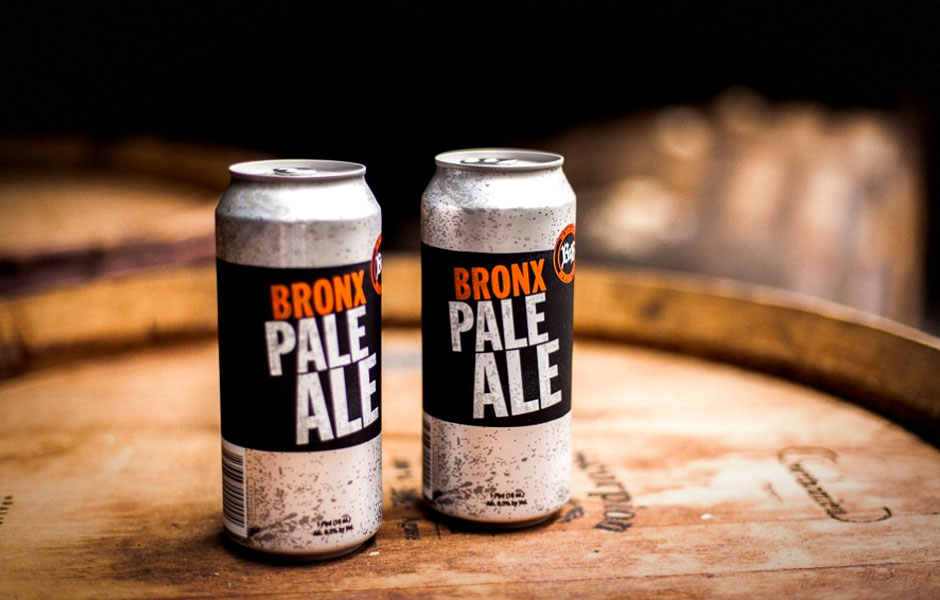New Yorkers have long been living in the “Great Age of Gentrification.” With each passing season, it seems that another corner of the city has been reclaimed with community gardens, rows of rustic French cafes, and dim, expensive cocktail bars. From Astoria to Bed Stuy, and Hell’s Kitchen to Red Hook, the roughest edges of New York have been rounded.
Except, it seems, for the Bronx. Besides being the home of the Yankees, the Bronx is overlooked in the ongoing “softening” of New York. However, that borough still has its fair share of old school charms as well as a wave of incoming new blood. One of the high-flying flags of this recent trend is the Bronx Brewery, a fresh craft beer company dedicated to bringing a rich brewing tradition back to the borough.
Founded by Damian Brown and Chris Gallant in 2010, the Bronx Brewery has quickly become a name to watch in the New York beer scene. Brown started home brewing ten years ago and spent time working at a microbrewery before getting his Brewing Science Degree at UC-Davis in California. While there, Brown was presented with an intriguing proposition.
“A guy who is currently on our team, Steve O’Sullivan, who was born and raised Bronx had the idea of starting a brewery,” said Brown. “He reached out to the administrators at UC-Davis to look for anyone who might be interested in acting as a brewer, and I thought it was a great way to get involved on the ground floor. So, I finished up at school and then moved out to New York.”
That is when he connected with Gallant, who was working for Heineken in South America. Gallant was looking to move back to New York with his wife and, when they saw a posting for the brewery that Brown had placed on a LinkedIn alumni message board, the two started communicating and formed a partnership.
After raising enough money to get the ball rolling, the two spent their first year honing their flagship beer, which is “a big and balanced American Pale Ale.” Both Brown and Gallant love Pale Ales and thought it would be an approachable beer to build their brand on. The Bronx Pale Ale features a base malt that is typical of an English ale with a “biscuity, nutty profile,” which is balanced by West Coast American hops for a “citrusy” taste.
Once Brown and Gallant had their flagship beer, they used space in a Connecticut brewery to make the beer and once a week, Brown would transport the kegs to their leased office space in the Mott Haven neighborhood of the Bronx. Now, just a few years (and another round of funding later) the duo is hard at work building out their new brewery space off the Cypress Avenue stop on 6 Train line—complete with a dog run for visitors.
In that new space, the Bronx Brewery will continue to master their current roster of beers. After starting the brewery, Brown and Gallant developed several specialty seasonal beers: Bronx Rye Pale Ale for fall, Bronx Black IPA for winter, Belgian Pale Ale for spring, and a Summer Pale Ale.
Going forward, Brown wants to focus on barrel aging each of their seasonal beers, which is fairly uncommon practice for a microbrewery. For one year, each batch of their seasonal beer is kept in a barrel that has been used to store a different type of liquor—this process adds a new flavor to their specialty ales. Currently, the Bronx Brewery offers a Gin Barrel Aged Bronx Pale Ale, a Bourbon Barrel Aged Bronx Pale Ale, and a Zinfandel Aged Bronx Pale Ale. They are also experimenting with ales aged in tequila, rye and chardonnay barrels.
Right now, Bronx Brewery ales are available in New York City, Long Island, upstate New York as far north as Albany, and, as of this month, in parts of Connecticut. However, their distribution is spreading and will soon be available throughout Western New York as well.
With each passing year, the Bronx Brewery is becoming an undeniable presence on the New York beer scene. And while Manhattan, Brooklyn and Queens receive plenty of attention as the city’s popular boroughs, Brown and Gallant’s beer gives New Yorkers another reason to spend their time in the Bronx. But Brown and Gallant don’t really care about all that—in the end its all about the beer.
“Brooklyn Brewery has done a great job giving New York its lager. We think that we can give the city its pale ale.”
Featured image and all slideshow images courtesy of Alan Gastelum.







